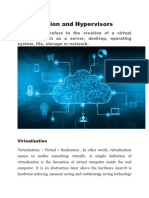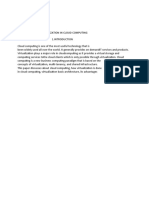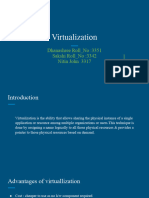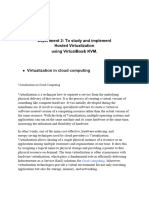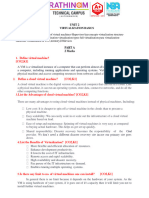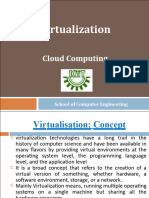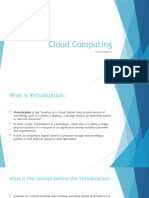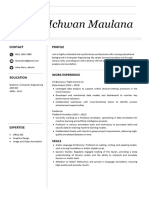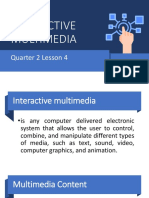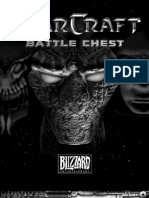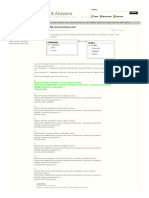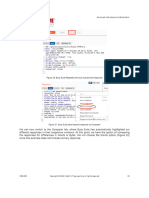0% found this document useful (0 votes)
96 views84 pagesUnit-2 Part-1
This document discusses virtualization including different types, benefits, and key concepts. It begins by introducing virtualization approaches and technologies like hypervisors. It then covers memory, network, and storage virtualization techniques. The document outlines benefits of virtualization such as more efficient resource allocation and cost savings. It also defines key virtualization terms including virtual machines, host and guest machines, and hypervisors. Overall, the document provides a high-level overview of virtualization concepts and technologies.
Uploaded by
prateekpuranik3Copyright
© © All Rights Reserved
We take content rights seriously. If you suspect this is your content, claim it here.
Available Formats
Download as PDF, TXT or read online on Scribd
0% found this document useful (0 votes)
96 views84 pagesUnit-2 Part-1
This document discusses virtualization including different types, benefits, and key concepts. It begins by introducing virtualization approaches and technologies like hypervisors. It then covers memory, network, and storage virtualization techniques. The document outlines benefits of virtualization such as more efficient resource allocation and cost savings. It also defines key virtualization terms including virtual machines, host and guest machines, and hypervisors. Overall, the document provides a high-level overview of virtualization concepts and technologies.
Uploaded by
prateekpuranik3Copyright
© © All Rights Reserved
We take content rights seriously. If you suspect this is your content, claim it here.
Available Formats
Download as PDF, TXT or read online on Scribd
/ 84



